by Naomi L. | September 20, 2017 | Blog, Creative Writing, Off The Bookshelf |
Last year, I reached my first-ever Goodreads Reading Challenge goal of ten books, most of which were historical fiction. I’ve already covered Pride and Prejudice and Sense and Sensibility by Jane Austen in my Off the Bookshelf segment, so today I’m switching over to another author whose novel I really enjoyed: The Picture of Dorian Gray, by Oscar Wilde!
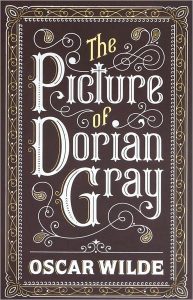
The Picture of Dorian Gray, by Oscar Wilde
Summary
The Picture of Dorian Gray is the only novel written by Irish poet and playwright Oscar Wilde. First published in Lippincott’s Monthly Magazine in July 1890, the novel exists in three versions: the censored 13-chapter edition published in the magazine in 1890, the revised 20-chapter book edition published in 1891, and the uncensored 13-chapter edition submitted to the magazine with all of Wilde’s original material intact. The story follows the moral corruption and downfall of Dorian Gray, a handsome yet narcissistic young man whose vanity leads him to wish that a painting of himself will age in his stead. After his wish comes true, Dorian succumbs to a hedonistic lifestyle of vice and sin from which his insatiable desire for pleasure leaves him little chance to escape.
Review
If it were only the other way! If it were I who was to be always young, and the picture that was to grow old! For that—for that—I would give everything! Yes, there is nothing in the whole world I would not give! I would give my soul for that! – Dorian Gray
A brief disclaimer: Because Wilde’s novel exists in three different forms, each one differs slightly from the others, in some cases affecting the plot. The version I read is the 1891 20-chapter book, so this is the edition that will be referenced throughout this review.
The Picture of Dorian Gray has often been compared to the Faust story, in which a dissatisfied scholar sells his soul to the Devil for unlimited knowledge and pleasure. Similarly, in a moment of weakness and newfound vanity, Dorian offers up his soul for the chance to remain young and handsome forever. In response to this wish, the painting becomes a mirror of Dorian’s soul and begins reflecting the effects of his actions that his body will now be spared. This inciting incident plays into the themes of valuing youth and beauty above all else and the consequences of choosing pleasure over virtue.
One of the most prominent themes in the book is the conflict between morality and pleasure. Although Dorian initially struggles with his new philosophy, his selfish desires ultimately overpower his guilt: after his romance with the young actress Sibyl Vane ends tragically, the subtle change in his portrait’s face proves his actions will have no visible consequence, as the painting will bear all the marks of his sins for him. After accepting Sibyl’s death as an artistic personification of tragedy, Dorian is free to pursue pleasure without risk and spends the next several years of his life indulging in various forms of gratification. Only in the final chapters of the story does he come to question if perpetual youth was worth the price of his soul.
Indeed, the fact that his artistic lifestyle costs him his soul is what makes Dorian Gray such an enigmatic character. Having given up his emotional depth, the protagonist’s true personality remains a mystery to the reader throughout the story. One detail of the novel that makes this evident is the heavy color motif. So many descriptions in the novel involve color in some way, and while at first I dismissed these vivid descriptions as the flowery writing of a poet, I later recognized their allusion to the main character’s internal conflict. The paradox of The Picture of Dorian Gray is that by giving up his soul for the pursuit of pleasure and the perpetuation of beauty, Dorian is no longer able to appreciate either—that is, in a world full of color and beauty, Dorian’s soulless existence is perpetually gray. Thus, Wilde’s novel—at least the revised version—supports the idea that art alone cannot bring happiness; one must have emotional depth in order to appreciate it.

From left to right: Lord Henry Wotton, Dorian Gray, Basil Hallward (Dorian Gray, 2009)
Aside from Dorian, the story features two other important characters: Basil Hallward, the painter of the infamous picture, and Lord Henry Wotton, a witty aristocrat who advocates “New Hedonism”. Both are equally fascinated by Dorian’s beauty but stand at opposite ends of his moral spectrum: Basil represents conformity to moral standards while Lord Henry represents the temptation of sin. In this way, these two gentlemen play the roles of Dorian’s “shoulder angel and devil”, respectively, and personify the novel’s overarching conflict between virtue and hedonism: Basil sees only beauty in Dorian and encourages him to remain virtuous, while Lord Henry lauds his youth and persuades him to live for pleasure above all else. And although Dorian never escapes from the guilt the painter evokes in him, the fact that the story plays out far worse for Basil than for Lord Henry further supports the novel’s theme of beauty’s superiority over virtue.
Interestingly, The Picture of Dorian Gray presents an unusual example of an unscrupulous protagonist who repeatedly dodges moral justice. While Dorian influences several people to unfortunate ends throughout his life, he himself doesn’t get what he deserves for almost the entirety of the novel. While this may be an allusion to Wilde’s aesthetic beliefs, it’s more frequently interpreted as a comment on society’s superficiality and hypocrisy; although several rumors emerge about Dorian’s immoral exploits over the years, his peers nonetheless continue to accept him because he’s beautiful and, by all appearances, innocent. Yet as with any Faustian story, sin is ultimately punished in the end, thus completing the theme of eternal pleasure coming at an exceedingly high cost.
The Picture of Dorian Gray is an intriguing novel, a mix of Gothic horror with social and artistic commentary that never seems to settle on a single form. Even the moral of the story is not so black and white as its similarity to the Faust fable would suggest, as the main character doesn’t suffer the consequences of his actions until the very end, and even then justice is brought about by his own hands. Yet by all accounts, with its enigmatic themes, poetic motifs, and structure of an unusual moral fable, Wilde has created nothing less than an outstanding and fascinating work of art.
Inspiration
There is no such thing as a moral or an immoral book. Books are well written, or badly written. That is all. – Oscar Wilde
In a strange meta twist, the most fascinating aspect of The Picture of Dorian Gray may actually be the author’s preface in the book edition. When Oscar Wilde first submitted his manuscript for publication, the editor of Lippincott’s Monthly Magazine censored the story, removing roughly 500 words without the author’s knowledge. Nevertheless, the novel was widely decried as a violation of public morality. A year later, upon publishing the revised book version, Wilde issued a preface to address these criticisms and defend his work, claiming in this artistic manifesto that the only point of art is to be beautiful, not to serve a moral purpose.
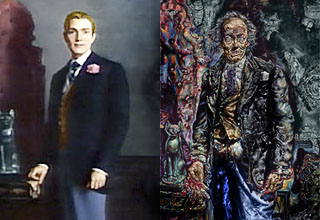
Dorian’s painting, before and after
(Image source: TV Tropes)
Yet in The Picture of Dorian Gray, the eponymous painting itself serves a moral purpose by shedding light on the high price of vanity. Despite the author’s advocacy of aestheticism, his novel suggests that art always contains some degree of meaning: though Dorian constantly tries to immerse himself in a purely artistic lifestyle, he can never escape the haunting lesson in the portrait that bares his corrupted soul. Thus, while he may not have written a truly aesthetic piece, Wilde has nonetheless created a stunning work of art that inspires a poetic theme: art and morality are perpetually intertwined.
As far as artistic inspiration, this novel certainly has its fair share of philosophy. One of the most intriguing aspects of the story is Lord Henry’s powerful influence over the naïve young Dorian. Although Lord Henry’s beliefs contrast heavily with the standards of his time, he speaks with such wit and persuasive language that one can’t help but be drawn to his ideas, however misguided they are. Indeed, the only character immune to these ideas is Basil, whose conventional mindset keeps him morally grounded but makes him utterly boring in the eyes of his impressionable muse. Reading Lord Henry’s speeches, I could easily understand how any weak-minded individual would embrace his poisonous philosophy, which thankfully is revealed to be shallow and impractical by the second half of the story. If anything, the novel is a cautionary tale about the consequences of trying to live such a hedonistic life: the pursuit of pleasure may satisfy the senses with each experience, but it still isn’t worth giving up one’s soul.
Overall, I found The Picture of Dorian Gray to be an enjoyable and intriguing read. Its themes of morality, superficiality, and artistic living make it a notable addition to literature’s vast collection of moral fables. Yet the fact that Wilde was such a strong proponent of aestheticism raises the ultimate question: if his philosophy was to create “art for art’s sake”, should we really put so much weight on the moral themes of his only novel, or take a step back to simply glimpse these undertones while admiring the beauty of his work?
by Naomi L. | July 12, 2017 | Blog, Creative Writing |
Yes, we’re already halfway through 2017! Amazing, isn’t it? Now that we’re in July, it’s once again time to assess our progress on our reading goals for the year. I’ll go first!
My 2017 Reading Goals
Like I did last year, I set a goal of ten books for the Goodreads 2017 Reading Challenge, a reasonable goal for a relatively slow reader like me. So far, I’ve met half my goal for the year! I’ve also noticed a trend of more books from my to-read list in January actually reaching my have-read collection, as well as more nonfiction books making the list (thanks in no small part to my pursuit of a freelancing career).
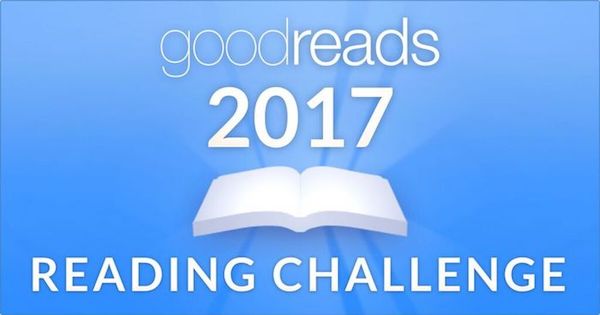
I plan to write a more detailed report on my 2017 reading goals at the end of the year. In the meantime, here’s a brief review of the books I’ve read so far, am currently reading, and still plan to read:
Books I’ve read so far
- The Hunger Games, by Suzanne Collins
- A Game of Thrones, by George R.R. Martin
- I Am Pusheen The Cat, by Claire Belton
- High Performance Paperback, by Ray Brehm and Jim Molinelli
- Fahrenheit 451, by Ray Bradbury
Books I’m currently reading
- 1984, by George Orwell
- Ready Player One, by Ernest Cline
- You Are A Writer, by Jeff Goins
- The Business of Writing & Editing, by Sagan Morrow
Books I still plan to read
- Wuthering Heights, by Emily Brontë
- Arrival, by Ted Chiang
- StarTalk, by Neil deGrasse Tyson
Your turn! Any reading goals you’re still working toward this year? Which ones have you completed so far?
by Naomi L. | May 24, 2017 | Blog, Creative Writing, Off The Bookshelf |
Back in January, I finally returned to my Off The Bookshelf segment with a review of Jane Austen’s Pride and Prejudice. So today, I’d like to continue my reviews by writing about the other Austen novel I read last year. Since I’ve definitely been enjoying reading her literature, there was really only one novel I could review next: Sense and Sensibility!
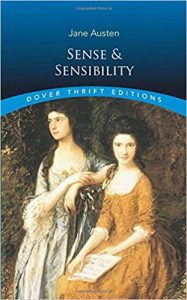
Sense and Sensibility, by Jane Austen
Summary
Sense and Sensibility was Austen’s debut novel, first published in London in 1811. The story follows sisters Elinor and Marianne Dashwood as they adjust to their new life with their widowed mother and younger sister, who have all been left impoverished after Mr. Dashwood’s death. Over the course of the narrative, the sisters experience love, romance, and heartbreak, and eventually come to realize that they must learn to master the delicate balance between sense and sensibility in order to achieve happiness.
Review
Though I wouldn’t say I liked it as much as Pride and Prejudice, I enjoyed Sense and Sensibility for Austen’s realistic take on romance and manners, seasoned with all her classic humor and wit. Much like in the author’s more popular novel, the main characters of this story are faced with the challenge of finding love in a world where their low income and social status put them at a severe disadvantage. What really sets this novel apart from its successor, however, is the comparison it draws between the tempers of Elinor and Marianne, who each occupy one extreme of the romance-realism spectrum.
As the title suggests, the most prominent theme in Sense and Sensibility is the contrast between good sense and overt sensitivity (known as sensibility back then). As the eldest Dashwood sister, Elinor has the best judgment in her family and is highly skilled at exercising good sense and composure. Her younger sister Marianne, on the other hand, has no control over her emotions and no desire to keep her overly sensitive demeanor in check, favoring romantic idealism over etiquette. This contrast between their personalities makes for several interesting situations throughout the story, but in the end both sisters learn the same valuable lesson: too much sense or sensibility only leads to unhappiness. Only after Elinor learns to open her heart to sensibility and Marianne learns to temper her spontaneity with sense do they both achieve their happy endings.
Another major theme in the book is the role of money and social standing in romance. Though her novels all have happy endings, Jane Austen was never one to tell an idealistic love story; in her view, even the truest love isn’t immune to the real-world obstacle of low income. In the most notable example, Marianne and Willoughby seem like a perfect match: they’re both romantic and outspoken about their opinions on art and love, and spend so much time together that everyone assumes they’re engaged before they even say a word. Unfortunately, being one of the author’s well-known “hero caricatures”, the charming Willoughby couldn’t be anything less than a scoundrel, and sure enough, his expensive tastes coupled with Marianne’s poverty lead him to jilt her for a wealthy young lady he doesn’t love. Funnily enough, the same obstacle of wealth turns out to be a saving grace for Edward Ferrars, who for most of the story finds himself honor-bound to a loveless engagement only to be saved at the end from said commitment by his disinheritance from his mother, leaving him free to give his heart to Elinor after his conniving fiancé abandons him. From beginning to end, wherever there are love and romance, the shadow of money looms in the background.
Overall, Sense and Sensibility is an enjoyable read that shows less-than-idealistic romance in a humorous light, as well as an interesting dynamic of character development between two polar opposite sisters. Just as Marianne learns from Elinor that excessive emotion can destroy one’s life, Elinor learns from Marianne that excessive repression of emotion leads to intense suffering and risk of abandonment. Still, in true Austen fashion, both sisters achieve their happy endings by the story’s conclusion, finding comfortable lives with gentlemen who can provide them with all the security and emotional fulfillment they desire. In this way, from her very first novel, the author reveals that despite all the realistic obstacles in its way, romance can still thrive in a world plagued with social barriers, a hope not yet forgotten in the modern age.
Inspiration
Much like Pride and Prejudice, Sense and Sensibility offers a glimpse into the romantic and realistic elements of past life that have survived into the present. The novel also teaches a valuable lesson on the importance of both practicing good sense and being willingly sensitive, albeit a somewhat imbalanced one that favors sense. We shouldn’t give our emotions total control over our happiness, but we also shouldn’t be afraid to feel vulnerable in the pursuit of love. There are plenty of opportunities in life to be both sensible and sensitive; it’s all a matter of exercising the right judgment.
Though her novels often highlight the limitations placed on women in the society of her day, Jane Austen clearly had a way of demonstrating the strength that women have always had to succeed within their means. Because of that, I know I can always turn to one of her novels for inspiration on writing heroines with real personalities, issues, and aspirations. Whether you seek inspiration for historical fiction, realistic characters, or contrasting themes in human behavior, Sense and Sensibility is an excellent novel that warrants a place beside Pride and Prejudice on any Austen fan’s bookshelf.
by Naomi L. | January 25, 2017 | Blog, Creative Writing, Off The Bookshelf |
Welcome back to my Off The Bookshelf segment! It’s been almost a year since I’ve written a book review for my blog, which is a shame since I do love recommending my favorite novels. The good news is that I read several new books last year and plan to read even more this year, so I’ll have plenty of material to work with in 2017!
So today, I’d like to start off this year’s reviews with my favorite novel from my 2016 list: Pride and Prejudice by Jane Austen!
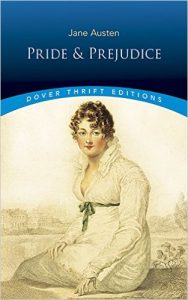
Pride and Prejudice, by Jane Austen
Summary
First printed in 1813, Pride and Prejudice is Jane Austen’s second published novel and one of the most beloved works in English literature. The novel follows the story of Elizabeth Bennet, an exceptionally clever young woman and the second of a country gentleman’s five daughters, as she navigates issues of manners, morality, education, and romance in the landed gentry society of the British Regency. Among her greatest challenges is dealing with Mr. Darcy, a gentleman with great wealth and even greater pride with whom she repeatedly clashes. As their relationship progresses, both Elizabeth and Mr. Darcy come to learn that first impressions are often misleading, and that they must overcome their pride and their prejudices before the story can reach its happy conclusion.
Review
Every so often, you come across a story so well written, so absolutely brilliant that it draws you in from the first sentence and keeps you hooked to the very last page. Such was my experience with Pride and Prejudice, a literary masterpiece from a brilliant mind of the turn of the 19th century. Jane Austen’s novel is still beloved by many readers today, and with good reason: it’s a comedy that covers some of humanity’s most relatable issues – love, marriage, etiquette, wealth, and morals – all from the perspective of an astute young heroine who challenges and overcomes the obstacles of her social position to achieve her happy ending.
Naturally, a central theme in Elizabeth’s story is the difference between the superficial and the indispensable, as well as the emotional development that comes with learning to distinguish the two. After all, there’s a reason the novel was originally titled First Impressions. In the beginning, the protagonist has a habit of forming her opinions of people immediately and consolidating those opinions through selective observation, a practice she believes is a credit to her intelligence. As a result, she dislikes Mr. Darcy from the day she meets him and grows to despise him the more time she spends with him, while Mr. Wickham earns her favor instantly with his charm and apparent good breeding. Halfway through the story, however, Elizabeth discovers that her preconceptions of both gentlemen were misplaced, proving that appearance isn’t always the best indicator of worth. The same lesson is learned by Mr. Darcy, who initially believes his proud behavior to be justified but is promptly put in his place by a woman he once thought was beneath him. Fortunately, both these characters prove mature enough to shed their most prominent flaws in favor of the romance that will make them “the happiest couple in the world”. First impressions are powerful, but thankfully they don’t always stick!
Another of my favorite themes of the book is the only-too-familiar contrast between proper behavior and real character. Throughout the narrative, it’s made apparent that while everyone behaves politely, some characters only do so to maintain a respectable place in high society while others are genuinely good at heart. A notable example comes up during a scene in Netherfield: when Elizabeth arrives at the Bingleys’ estate to take care of her sister Jane, who has fallen ill, all three of her hosts smile and treat her with the utmost kindness and hospitality. The second she leaves the room, however, Caroline and Louisa start criticizing Elizabeth’s dirty clothes while Charles remarks on how much she must love her sister to have walked so far on muddy roads just to see her. Even among siblings, people can vary greatly in character, but good manners are universal!
Austen was always an expert at implementing irony and satire in her writing, and Pride and Prejudice is no exception. Being witty and lively by nature, much of Elizabeth’s perspective includes hints of criticism about her reality: the influence of her family’s low income on their social standing (e.g. Jane’s failed friendship with Caroline Bingley), the excessive pride of some of her wealthier acquaintances (e.g. the unintentional insults in Mr. Darcy’s proposal), marriage as a requirement for women to secure a respectable position in society (e.g. Charlotte Lucas agreeing to marry Mr. Collins, a man she doesn’t love). And while the author didn’t necessarily discourage the following of such social rules in her novels, she did present them in a comical light that at least called these societal standards into question.
Overall, Pride and Prejudice is a fantastic novel that I would highly recommend to anyone who enjoys clever insights into human thoughts and behavior. For romantics and realists alike, this story has something for everyone and will surely continue to captivate audiences for generations, broadening our perceptions of the societal norms by which we live. To anyone who loves literature, it’s certainly an enlightening and delightfully entertaining read!
Inspiration
Ms. Austen’s beloved novel is one of those classic pieces of fiction that remains relevant long after its time. Though the story takes place in the early 19th century, its themes of social conduct, proper etiquette, and first impressions are still universal in the modern world. Whenever I need inspiration for character development, I know I can turn to an Austen novel for insight on general behavior and the restrictions of polite society to better understand how people think and function in everyday life. Basically, Pride and Prejudice is an excellent example of a point I’ve made in the past: that historical fiction can show us the elements of human nature that don’t change over time.
If you’re a historical fiction author or a writer of stories about the human condition, Pride and Prejudice will definitely be a great source of inspiration for your characters, whether they’re 19th-century country folk, 21st-century city dwellers, or anything in between. The greatest stories are those that explore what it means to be human, which makes it no surprise that this novel always appears near the top of best-books-ever-written lists. So if you haven’t yet, I strongly urge you to pick up a copy of Pride and Prejudice and see for yourself what a delightful read it truly is. You may find to your amazement that despite having lived so long ago, Jane Austen can still teach you a thing or two about the ironies of your economic and social reality!
by Naomi L. | January 18, 2017 | Blog, Creative Writing |
Welcome to the second part of my top ten list of books to read in 2017! Looks like another Goodreads reading challenge is on the horizon! If you haven’t yet, feel free to check out the first half of my list from last week. Otherwise, enjoy!
 6) Wuthering Heights by Emily Brontë
6) Wuthering Heights by Emily Brontë
Here’s another selection from last year that I didn’t get around to reading in 2016. Hopefully I’ll have better luck with it this year! Wuthering Heights has been on my to-read list for a while, even before I received a copy as a gift some years ago. With quite a few dystopian novels making it on my list for 2017, I’m sure a break for historical fiction will be more than welcome!
 7) The Martian by Andy Weir
7) The Martian by Andy Weir
After indulging in so many historical novels last year, it’s time I start picking up more science fiction. After watching this movie in 2015 and loving it, I decided to read the book on which it was based, though it would still be a while before I could get my hands on a copy. Now that I’m starting a new chapter of my life and should have a little more free time, I look forward to adding The Martian to my list of reads for 2017!
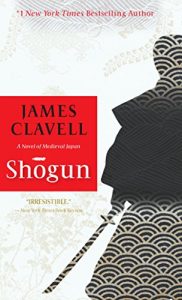 8) Shogun by James Clavell
8) Shogun by James Clavell
This book was recommended to me by my parents, both of whom read it a long time ago and loved it. The fact that they want me to pick it up is a sign of how well they know me, because one of my greatest obsessions in life has long been the culture and history of Japan! Maybe it’s the fact that I’m part Japanese myself, but something about the country just draws me in and intrigues me to no end. It’s a long read for sure, but if I find the time this year, I’d love to give Shogun a try!
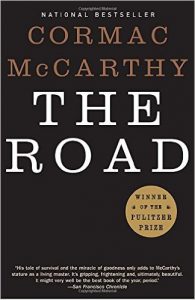 9) The Road by Cormac McCarthy
9) The Road by Cormac McCarthy
Here’s another selection that made it onto my list by recommendation, in this case by my boyfriend. He read this book a while back and really enjoyed it, though he did warn me it would be kind of depressing. Still, the author’s unique style of storytelling stands out and will certainly make The Road an interesting choice for my 2017 reads!
 10) StarTalk, edited by Neil deGrasse Tyson, Jeffrey Simons, and Charles Liu
10) StarTalk, edited by Neil deGrasse Tyson, Jeffrey Simons, and Charles Liu
Fully titled StarTalk: Everything You Ever Need to Know About Space Travel, Sci-Fi, the Human Race, the Universe, and Beyond, this book is essentially a written adaptation of Neil deGrasse Tyson’s popular podcast and National Geographic TV series, full of scientific questions and answers about the Universe as we know (or don’t know) it. I know it’s not like the other selections on this list, but similar to last year’s format, I’d like to include at least one nonfiction book in my 2017 lineup. I gave this book as a Christmas present to my boyfriend in 2016, though it was really a gift for both of us as I have every intention of borrowing it! I’ve always been fascinated with science in general and space in particular, so StarTalk is definitely a book I’ll enjoy reading this year!
This concludes my list of books to read in 2017! I hope you enjoyed it, and as always, thanks for reading!
What about you? Any books you’d like to read this year? What other goals have you set for 2017?
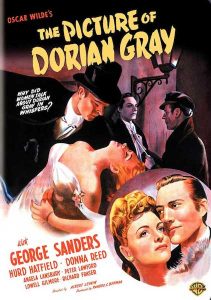






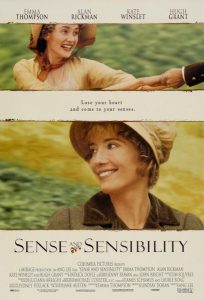








Recent Comments